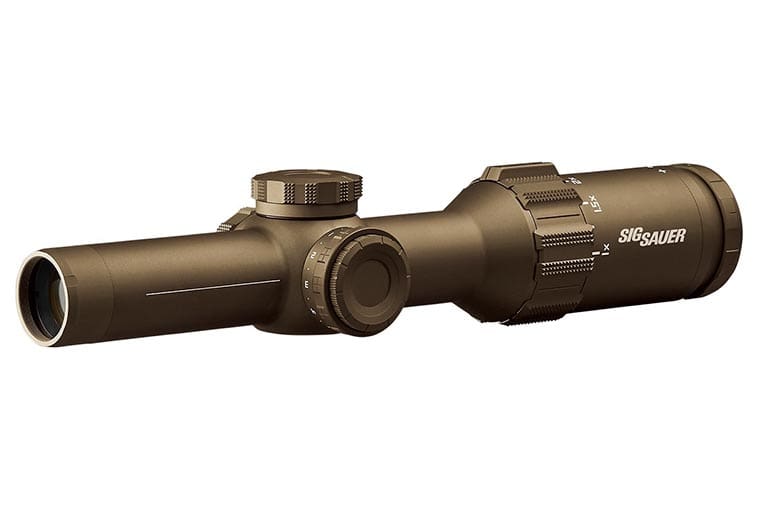Back in 2018, SIG SAUER was awarded a $12 million contract to supply USSOCOM with a version of their TANGO6 1-6X24 second focal plane rifle scope. All seemed well and good. But military procurement being what it is, after the contract was awarded, USSOCOM — through the Navy Surface Warfare Center – Crane, which handles the contracting process — changed its mind.
They decided that they’d really rather have a different reticle than the one specified in the original solicitation. As Soldier Systems reports, USSOCOM decided that, upon further reflection, they’d really rather have a Horus Tremor8 etched illuminated reticle which would accommodate 6.5 Creedmoor in addition to 5.56 ammo. The Tremor8 reticle didn’t exist when the original contract was awarded. That meant a change to the contract. A big one.
The result was NSWC-Crane awarding a new sole-source $9 million contract to SIG SAUER to upgrade the scopes USSOCOM originally wanted.
Leupold & Stevens, which had competed for the original contract, has called foul. In a protest letter to the Government Accounting Office, Leupold claims . . .
As Leupold’s letter of protest lays out . . .
The contract modification should have been separately competed because specialized reticles were not included in the scope of the Contract. The scope of work at issue is the inclusion of a glass-etched reticle in the S-VPS.10 Reticles are replaceable parts over the life of a rifle scope. The Solicitation specifically required that the S-VPS must be designed so that, when changing the reticle, no other design changes were necessary to the S-VPS.11 It also directed bidders that the S-VPS should be designed to accommodate other reticle designs.12 The scope of work did not identify that the bidders would be asked to create the additional reticle designs. If the Agency did not require the S-VPS manufacturers to allow for alternate reticle designs in the design of the S-VPS, the Agency could have been tied to a single manufacturer for the life-cycle of the S-VPS. These restrictions are calculated to allow the Agency flexibility in the future when it comes to procuring future reticles. Now, when procuring future reticles, the Agency undid the intended flexibility and awarded the reticles on a sole-source basis.
The price of the reticle work also substantiates that the specialized reticle design is beyond the scope of work of the original contract. Sig Sauer’s original contract price was $12,077,565, which included a standard reticle. The modification to provide a specialized reticle was for $9,338,800 and increased the contract price approximately 77%. Contract modifications are not intended to help the contractor “get well” after an improvident bid. Sig Sauer was significantly lower than either LSI or Nightforce. This contract modification for new work allows Sig Sauer to bring its price in line with its competitors without having to compete for the increased scope. The significant percentage increase in contract price, in addition to the language in the Solicitation, compel a finding that the contract modification is out-of-scope and should have been competed.
You can read Leupold’s full protest letter here (PDF).
To be clear, Leupold isn’t disputing the original contract award or the quality of the Tango6 scope. No one is alleging that SIG SAUER did anything out of bounds. Leupold’s beef is with USSOCOM, NSWC-Crane and the subsequent sole-source contract award.
As Soldier Systems writes . . .
Leupold asserts that Crane improperly modified its contract with Sig Sauer and that the changes made to the contract were so substantial that the contract should be terminated and a new competition conducted for the modified requirements. The additional funding of the contract modification is so much when added to SIG’s winning bid that Leupold feels someone else would have been awarded the contract instead of SIG.
This is a good illustration of one of the reasons why the military spends many multiples of the price consumers pay for much of the weaponry and gear it purchases. Your tax dollars at work.








